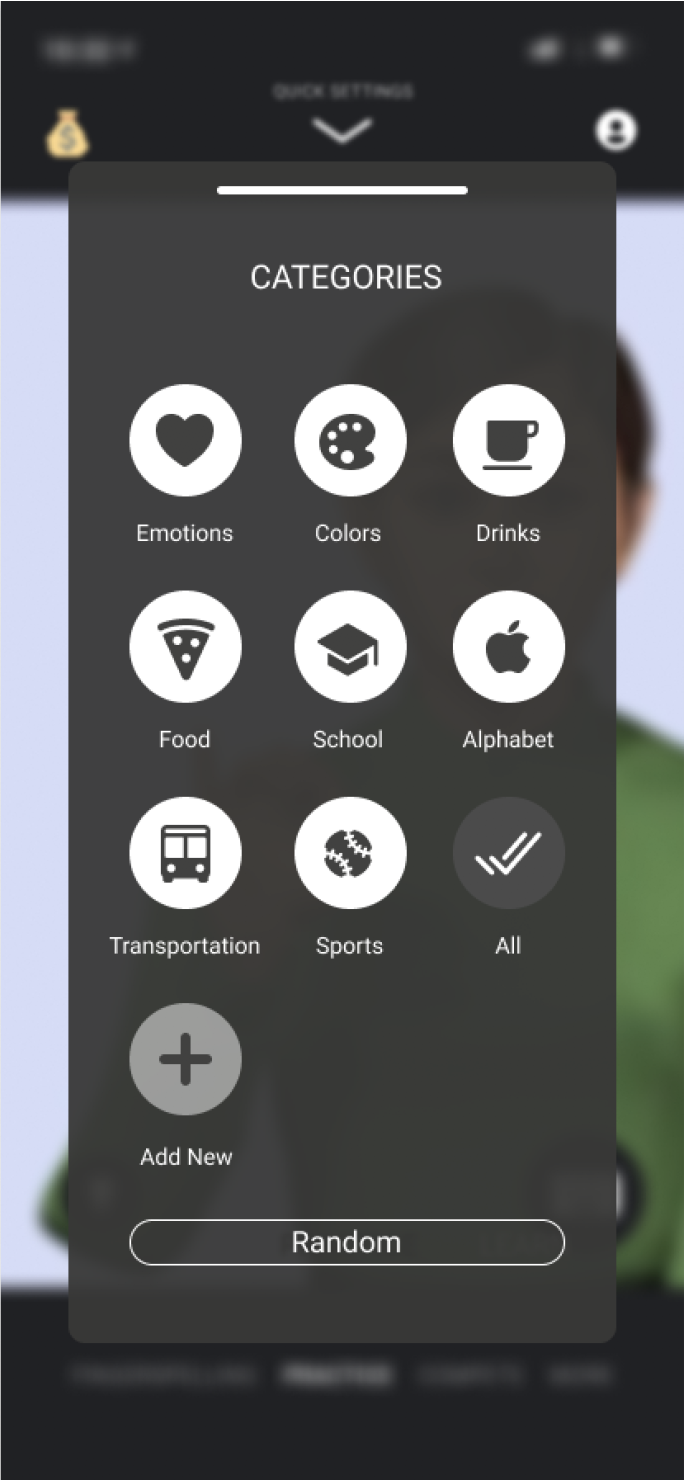Fingerspelling Bee


The Fingerspelling Bee Application is intended to aid users with learning, identifying, and enhancing their capabilities at fingerspelling. Unlike ASL (American Sign Language), the scope of fingerspelling is to use individual letters that are formed by the fingers to spell out words.
The ASL Avatar Project aims to develop a system that can generate ASL animation in response to spoken English. An avatar named Paula can portray all linguistic parameters of ASL. Paula has earned high marks for clarity and naturalness from users fluent in ASL. The web app makes use of this avatar to prompt the user interaction. The aim of this particular project is to evaluate, expand, and define the design and functionality of a mobile application while implementing game-design elements to the structure (gamification).

A high-fidelity prototype was conceived during the fall semester of 2020. The overall design is meant to give it a modern look, using a dark theme and as well as rethinking the game design of a digital language-learning site to give it a structure that is fairly similar to a mobile camera app. The following is a screen-by-screen walkthrough of the newly envisioned design to better understand the nature of the app.

The initial screen when the application opens will be ‘Fingerspelling’. It was decided this would be the main focus of the app and will work as the Home Screen overall.

Second screen in the bottom navigation menu. User can exercise their knowledge as Paula fingerspells words. User can also adjust the categories that filters the words Paula will spell. For every correct word, the user will collect a certain amount of coins or points.

This feature will require the user to sign up or sign in prior of using it. In compete, the user can create a new competition with another user or contact/friend. Two challenges are available: speed or spelling bee challenge. For every correct word, the user will collect a certain amount of coins or points.

The initial screen when the application opens will be ‘Fingerspelling’. It was decided this would be the main focus of the app and will work as the Home Screen overall.

Second screen in the bottom navigation menu. User can exercise their knowledge as Paula fingerspells words. User can also adjust the categories that filters the words Paula will spell. For every correct word, the user will collect a certain amount of coins or points.

This feature will require the user to sign up or sign in prior of using it. In compete, the user can create a new competition with another user or contact/friend. Two challenges are available: speed or spelling bee challenge. For every correct word, the user will collect a certain amount of coins or points.

Users can adjust some settings on the go from the ‘Quick Settings’ drop-down menu. Depending on the screen, the user will be able to adjust the speed and length of the words Paula will be spelling.

Like the ‘Quick Settings’, the user can drag up and down a quick edit for ‘Categories’ on the go. They can select any of the default categories or create their own.
Our goal is to enable automatic translation of English into American Sign Language, the language of the Deaf in North America. American Sign Language is not English coded as signs but an entirely different language from English with an entirely different structure.
Automated English-to- ASL translation will increase Deaf access to the hearing world. We are currently developing tools for generating ASL animation in response to spoken English.
Our avatar, named "Paula" for DePaul University, can portray all linguistic parameters of ASL. Paula has earned high marks for clarity and naturalness from users fluent in ASL. In addition to producing signed language, Paula has participated in several related projects, from Deaf education and interpreter training, to tutoring caregivers of people who are both deaf and mentally challenged.
American Sign Language (ASL) is the preferred language of the Deaf in North America. As a visual-gestural language, it utilizes handshape, position, palm orientation, movement, and non-manual signals. There is no one-to-one correspondence between ASL and English, as some signs translate into English as phrases or sentences. A manual alphabet is used to fingerspell names, technical terms, and loan words.
At present, human ASL translators are essential for effective communication between Deaf and hearing presenters and their audiences. Skilled ASL translators are in high demand and often not available for brief interactions. As a consequence, communication between hearing and Deaf people may be impaired or made impossible, to the disadvantage of both groups.
An ASL avatar will make information affordably accessible to Deaf people, enabling them to understand spoken interactions and to participate in classes and meetings.
ASL is the preferred language of over 500,000 people in the United States. The DePaul project has exciting potential not only for Deaf Americans and those who interact with them but also as a prototype for communication between Deaf and hearing people around the world.